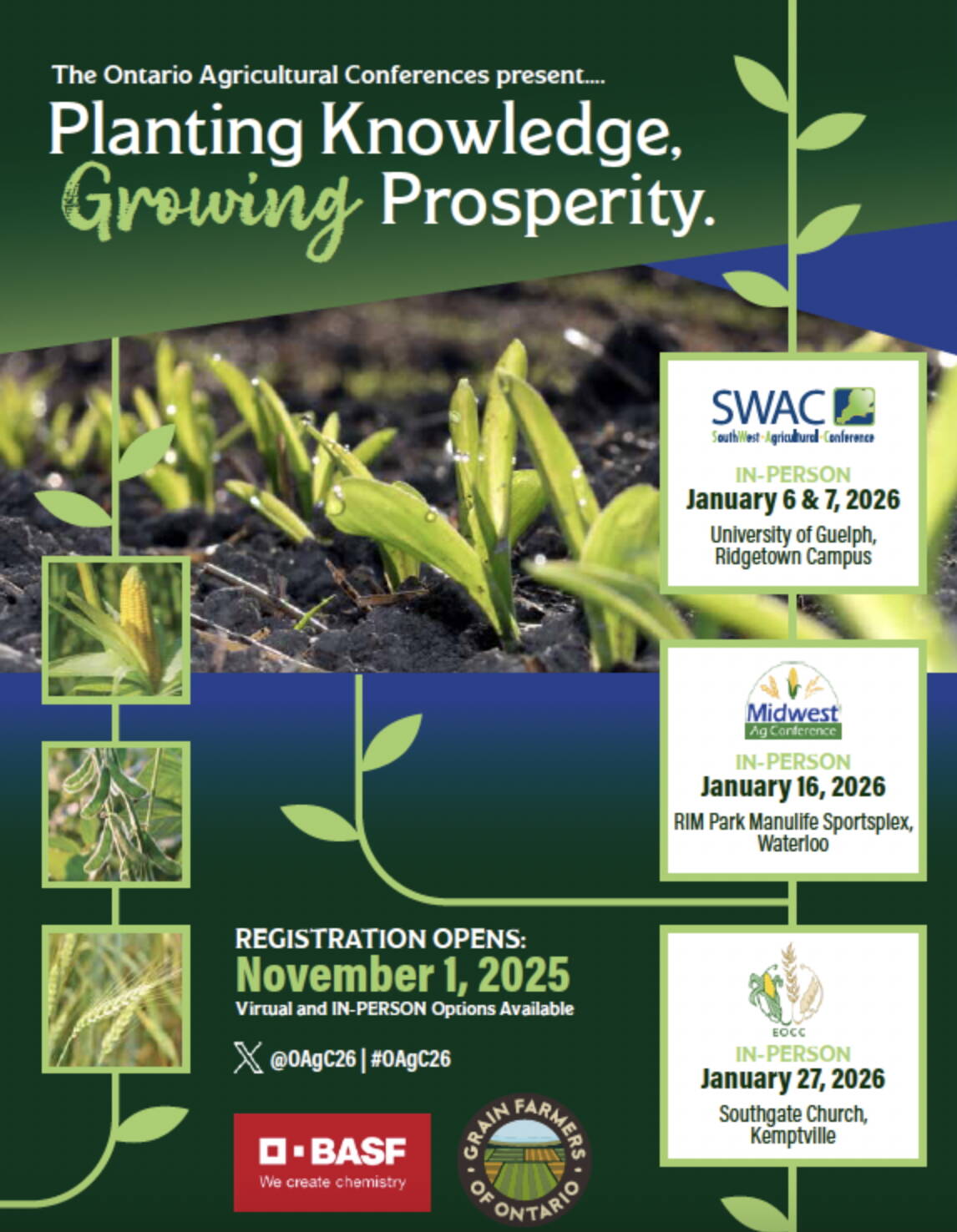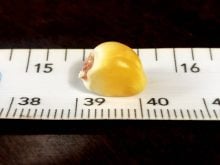Tar spot is now well-established in the province and experts from across North America encourage corn growers to think of it as a regional, not field specific disease.
That would closely align with how white mould and fusarium head blight are considered. Proactive management is needed.
The second day of the 2023 Ontario Agricultural Conference saw Martin Chilvers, associate professor of plant, soil and microbial sciences at Michigan State University, Darcy Telenko, assistant cropping systems professor at Purdue University, and Albert Tenuta, extension plant pathologist with the Ontario Ministry of Agriculture, Food and Rural Affairs, discuss how fungicides can be optimized for better control, considerations for different environmental conditions, and other factors affecting tar spot.
Read Also

Ontario Agricultural Conference increases accessibility
The Ontario Agricultural Conference 2026 offers in-person and online access to expert insights, hands-on learning, and networking opportunities.
Why it matters: Tar spot is in Ontario to stay. Good management requires growers to plan and be vigilant in season — rather than being fearful of the quick-to-proliferate pathogen.
Tar spot is highly prolific, spreading on the wind and from underlying soil residue. Years of data taken in Ontario and the United States show tar spot can impact every commercially available corn variety.
Some, however, are much more susceptible than others.
Tolerant hybrids the top tool
“The moral of the story is we don’t have anything highly resistant here,” says Tenuta in reference to multi-year variety trials conducted near Rodney. These trials showed tar spot spreading among all varieties, although the impacts on plant health and yield are much more significant on highly vulnerable hybrids.
Tenuta, Chilvers, and Telenko say hybrids which are more tolerant to tar spot — and ideally high-yielding — are the most powerful tools at growers’ disposal. Such varieties should form the base of integrated pest management plans, followed by effective fungicides and application timing.
In the meantime, work is ongoing to genetically map hybrids showing the best resistance potential. Mapping germplasm of resistant tropical varieties — from the geographies in which tar spot originated — is also ongoing.
Telenko says Ontario growers should not focus on choosing varieties with different maturity periods because the pathogen will spread as long as there is green tissue to infect. During the critical July period, early maturing varieties are still vulnerable. She later adds diversifying risk — say, by planting a variety which is highly tolerant, and another which is very high yielding — can have a significant financial impact at year-end.
What fungicides and when
According to Tenuta, all fungicides tested at the Rodney trial location were able to control and reduce tar spot. Application timing coincided with the VT stage — the traditional time at which Ontario growers try to address potential issues with fungi such as gibberrella.
The same fungicides worked in both 2021 under wetter conditions and higher disease pressure, and the drier conditions experienced in 2022. However, later applications were not as effective.
“At R3 and R4, we did not see the response,” says Tenuta.
Telenko adds the longevity of different fungicides — the period in which they remain effective — is beginning to show in research data from Purdue. She encourages growers to check the impact and longevity of different fungicides on tar spot and other diseases, as well as overall risk, before making the investment.
“We’re trying to put them down for that three-week window when it’s going to impact yield,” she says. “If you got to pick a time, VT is our optimum…We’re focusing on one (fungus) here, but remember, what is the biggest risk on your farm?”
Prior to the spread of tar spot to Michigan, Chilvers’ research indicates fungicides applied during the early vegetative growth showed little yield benefit. He also confirms observations to-date suggest application at VT generates a much better return on investment.
“Please include check strips,” says Chilvers. “If you don’t have a check strip out there you won’t know how those products will pay off.”
Weather and other factors
2022 was a dry year for many farmers in and outside of Ontario. The previous year, 2021, was much wetter, and by extension, a much worse year for tar spot. The fungus’ proclivity for damp conditions means corn growers need to stay vigilant during the growing season and take appropriate actions if the risk of significant tar spot development is high.
Indications of tar spot growth earlier in the season — by early July, for example — should warrant a stronger response than growth observed late in the month.
Scouting is important to catch early pathogen development. The Tar Spotter app can also be used to monitor conditions and tar spot in local areas. Chilvers encourages growers not to be complacent if tar spot has not been previously observed in a given field, in light of the rapid pace it can spread.
Chilvers also touched on seeding populations. Unlike the correlation between higher soybean densities and higher white mould pressure, research indicates greater corn populations are associated with lower tar spot pressure. However, the effect is not great enough to warrant the action.
The longevity of tar spot spores in crop residue is a cause for concern as well.
Indeed, Telenko says the true length of time in which spores remain viable in residue is not yet known, though at least one year is evident.
Even so, breaking out the plough may not be the best idea.
She reiterates that, when soil health is accounted for, and the fact that tar spot is so prolific and seemingly long-lived, selecting tolerant hybrids remains a better prevention option.















